One of the assignments during my Spring Children’s Literature course at UCF was creating a mini-teaching guide for the books we read for book clubs. We started with picture books for practice then students created them in their book clubs each week.
Today, I am happy to share the classroom uses and discussion questions found by my UCF Elementary Education students about some of the nonfiction books they read.
All Thirteen: The Incredible Cave Rescue of the Thai Boys’ Soccer Team
Author: Christina Soontornvat
Published October 13th, 2020 by Candlewick Press
Summary: An account of the amazing Thai cave rescue told in a you-are-there style that blends suspense, science, and cultural insight. Twelve young players of the Wild Boar soccer team and their coach enter a cave in northern Thailand seeking an afternoon adventure. But when they turn to leave, rising floodwaters block their path out. The boys are trapped! Before long, news of the missing team spreads, launching a seventeen day rescue operation involving thousands of rescuers from around the globe.
Teachers’ Tools for Navigation: This book would be great for a full class discussion and read aloud. This book has a lot of important themes that would be great for class discussion such as teamwork and will to survive. Additionally, incorporating STEM activities through engineering would be perfect since this book was full of it. And you can teach chronological order writing from the style of the book.
Discussion Questions:
- Have you ever been cave diving or experienced jumping into really cold water? Do you think you would be able to stay in the same wet/cold conditions for multiple days? What would help you get through the experience?
- The Wild Boars were used to working as a team on the field, do you think it was easy for them to keep each other’s hopes up or more difficult? Why?
- Different experts were called in to help get the team out of the water? Who do you think would be the most helpful in a similar situation? Do you think there are any people who weren’t called in that should’ve been called? Why?
- The British divers refused to dive into the cave because of safety hazards on June 29th, and 30th. In your opinion do you think they were right, or do you think the Thai military were right in telling them to go in? Why?
- If you were a family member of one of the thirteen trapped inside, what would you do? Would you call whoever you can think to help or keep yourself busy with aimless tasks or help pump water? Do you think you would remain calm? Why?
- Draw a scene from the book, why did you choose this scene and how does it make you feel?
- Why did the team continue to follow their coach further into the cave although at times it was unsafe? Who is someone you would follow feeling safe? Why?
- How did the maps and diagrams make it easier to understand the operation?
- There are many heroes in this book, who is someone in the book you consider a hero? and in your own life?
Recommended For:
Astronaut – Aquanaut: How Space Science and Sea Science Interact
Author: Jennifer Swanson
Published January 9th, 2018 by National Geographic Kids
Summary: Astronaut-Aquanaut explores the world of space and sea science, its differences and its similarities. The book is filled with interesting facts of the preparation and journey of surviving in a remote and hostile environment. The book also includes vivid photographs, as well as detailed accounts of real astronauts and aquanauts.
Teachers’ Tools for Navigation:This book could be useful in the classroom as a read-aloud book. In addition, this book is great at incorporating science and can be used within a STEM class, if possible. In addition, students are exposed to many after-reading activities that can help them comprehend the information that they had just read from this book in class.
Discussion Questions:
- If you were to pick to be an Astronaut or Aquanaut what would you choose? And why?
- What types of places do you think would be useful for aquanauts to discover? Where and why?
- If you were an Astronaut how would you describe the similarities of your job to an Aquanaut?
- Why do you think that these extreme exploration trips put a strain on the human body? And why do you think the body responds that way?
- If you were an Astronaut what type of experiment would you conduct? And how can that also relate to being an Aquanaut?
- Why is it important for astronauts to train underwater?
- Imagine being called for an emergency involving an asteroid that needs to be identified. In what ways do you think this might affect your life as an astronaut, and how you would feel?
- In what ways do you think that astronauts and aquanauts explore their surroundings?
- How does understanding pressure, heat, and temperature help us understand space and sea exploration?
Recommended For:
Call and Response: The Story of Black Lives Matter
Author: Veronica Chambers
Published August 17th, 2021 by Versify
Summary: Call and Response: The Story of Black Lives Matter written by Veronica Chambers is a powerful outlook on the events of the civil rights movement of 2020. The Black Lives Matter movement captured global attention and spurred thousands of people of all ages, races, genders, and backgrounds to stand up for progressive social reform. This book tells the story of how social media networks like Instagram, Snapchat, Tik Tok, as well as every news broadcasting site had come together to educate and inform the world on the systematic racism that has been growing in this country for centuries.
Teachers’ Tools for Navigation: This book could be used to help students understand a civil rights movements that is still going on today. The book shares information on the past and present situations that have led to this movement and includes pictures.
After reading this text, we would encourage my students to have a group discussion on there feelings towards the book, if the book made them feel a certain way, if they had an eye-opening facts that they would like to share, etc.
Discussion Questions:
- Do you remember another time in history when something was as big and powerful as the Black Lives Matter movement?
- What emotions did you feel while looking at some of the pictures provided in the novel?
- What are some ways that you can be a leader, like discussed in Chapter 6?
- What quote in the novel stood out to you? Why?
- In what ways do you perceive this movement
- How does it make you feel?
- Do you feel you are in a safe and comfortable environment?
- Do you or do you know of someone who may have been negatively affected by the BLM?
- Chapter 10 discusses young leaders. How did these young leaders lead, and why was it effective?
Recommended For:
She Persisted: Claudette Colvin
Author: Lesa Cline-Ransome
Illustrator: Alexandra Boiger
Published February 2nd, 2021 by Philomel Books
Summary: Inspired by the #1 New York Times bestseller She Persisted by Chelsea Clinton and Alexandra Boiger comes a chapter book series about women who stood up, spoke up and rose up against the odds!
In this chapter book biography by award-winning author Lesa Cline-Ransome, readers learn about the amazing life of Claudette Colvin–and how she persisted.
Before Rosa Parks famously refused to give up her seat on a bus in Montgomery, Alabama, fifteen-year-old Claudette Colvin made the same choice. She insisted on standing up–or in her case, sitting down–for what was right, and in doing so, fought for equality, fairness, and justice.
Complete with an introduction from Chelsea Clinton, black-and-white illustrations throughout, and a list of ways that readers can follow in Claudette Colvin’s footsteps and make a difference!
Teachers’ Tools for Navigation: This book can be used in the classroom to teach students about the civil rights movement as well as the life of Claudette Colvin. By teaching students about influential people of the civil rights movement. This introduction to figures helps students understand the effect that they had on the movement and also the importance of why the fight was important.
Interdisciplinary uses:
Social Studies: This book can be used to help teach students the importance of behavior between different people. Understanding the importance of treating everyone as equals is essential to promoting peace in society. This book talks about the errors of the past and focuses on how even though we have different genders, races, and looks it is important to remember that we are all the same.
History: This does a great job of going over the history of the civil rights movement. This book touches upon why the movement started, what those who lived through the movement went through in everyday life, as well as talking about important events within the movement.
Political Literacy- This book teaches the students on the importance of persisting. This book goes over the importance of having a voice especially in politics. By knowing your rights and expressing them in society it is possible to make a change.
Discussion Questions:
- The author cited one inspiration of the novel was the quote “You can’t be what you can’t see.” Why is it important to read books that feature many different main characters?
- What effect did the death of Delphine have on Claudette Colvin?
- While Claudette Colvin and Rosa Parks protested in very similar ways the story of Rosa Parks is more commonly known. Had you heard of Claudette Colvin before reading this book? Why do you think the story of Rosa Parks is more widely known.
- When Claudette Colvin was escorted off the bus she repeated that sitting was her constitutional right. Why is knowing your rights important? How does her knowledge of her rights affect the decisions she made in life?
- In the back of the book there is a list of ways to persist. One the top of the list is to conduct research on how others have brought about change. Why is understanding change in the commonuite important to making a difference in the world?
- When learning in school Claudette spoke about the attention that was spent on learning about injustice and civil rights. Claudette spoke about how she thought that this was more important and influential than the lessons they had covered in the past. Why is this so?
- Why do you think Claudette decided to take a stand on the bus?
- How did Claudette inspire others to take a stand?
- How did the testimonies of the students on the bus differ from the police officer and other citizens on the bus. Why would they lie?
- Claudette Colvin was charged with three charges of violating segregation laws, disturbing the peace, and assaulting a police officer. Why do you think one action resulted in multiple charges in court?
Recommended For:
History Smashers: Women’s Right to Vote
Author: Kate Messner
Illustrator: Dylan Meconis
Published July 7th, 2020 by Random House Books for Children
Summary: Myths! Lies! Secrets! Smash the stories behind famous moments in history and expose the hidden truth. Perfect for fans of I Survived and Nathan Hale’s Hazardous Tales.
In 1920, Susan B. Anthony passed a law that gave voting rights to women in the United States. Right?
Wrong! Susan B. Anthony wasn’t even alive when the Nineteenth Amendment was ratified. Plus, it takes a lot more than one person to amend the constitution.
The truth is, it took millions of women to get that amendment into law. They marched! They picketed! They even went to jail. But in the end, it all came down to a letter from a state representative’s mom. No joke.
Through illustrations, graphic panels, photographs, sidebars, and more, acclaimed author Kate Messner smashes history by exploring the little-known details behind the fight for women’s suffrage.
Teachers’ Tools for Navigation: This book could be useful in a classroom during a Social Studies lesson where women rights is being talked about and the history behind that time. This book would also be useful to help students relate to the same efforts of current movements like,Black Lives Matter and other current social injustices. It teaches history in clear facts on how women sacrificed and fought on amending the constitution to help them have a right to vote and a voice. It also goes over discrimination and how it still was affected.
Discussion Questions:
- How did this book help you better understand the movement for women to vote in our country?
- Why did Susan Anthony and Elizabeth Cady want the right for every American woman to vote? HH
- Why was Susan B. Anthony portrayed as the face of the women’s right to vote movement?
- How did the pictures and sidebars in the book help you understand what you were reading?
- How did women’s suffrage affect black women?
- Why do you think Susan B Anthony was used as the poster child for the book?
- What myths were found during the book and who was supposedly the first woman who spoke about women’s rights?
- What was the reason for women’s suffrage and the struggle for right for African Americans?
- How did women exercise political power throughout the book?
- In the book, how were black women involved in the fight for women’s suffrage?
- What did Frances Ellen Watkins Harper argue about?
- In 1792, Mary Wollstonecraft wrote an official document outlining what?
- On page 24, a document called, The Declaration of Sentiments, women listed their demands and read it aloud to a convention at the time. If you had an opportunity to write your demands for this convention, what would they be?
- From all the women leaders named in the book, who do you think was the most influential? Why?
- Of the strategies that women used to earn the right to vote in the United States, which do you think was the most successful? Why?
- After reading the book, what has been the impact of women’s suffrage in the 20th century?
- Give examples of some of the outcomes that happened when women’s rights activists would protest and picket?
- What was President’s Wilson’s response to the women’s protests?
Recommended For:
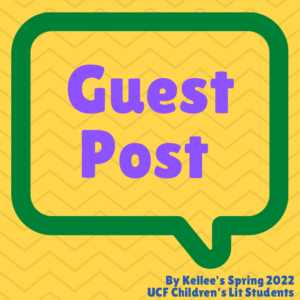
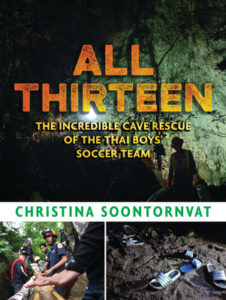



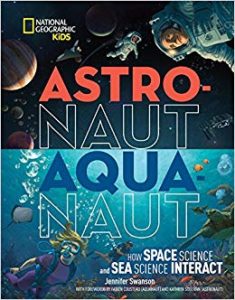
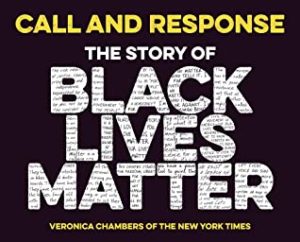
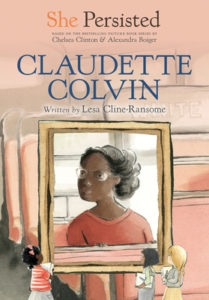

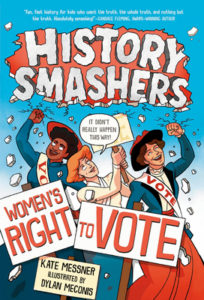

1 thought on “Guest Post: Classroom Uses for All Thirteen by Christina Soontornvat, Astronaut-Aquanaut by Jennifer Swanson, Call and Response by Veronica Chambers, She Persisted: Claudette Colvin by Lesa Cline-Ransome, and History Smashers: Women’s Rights to Vote by Kate Messner”